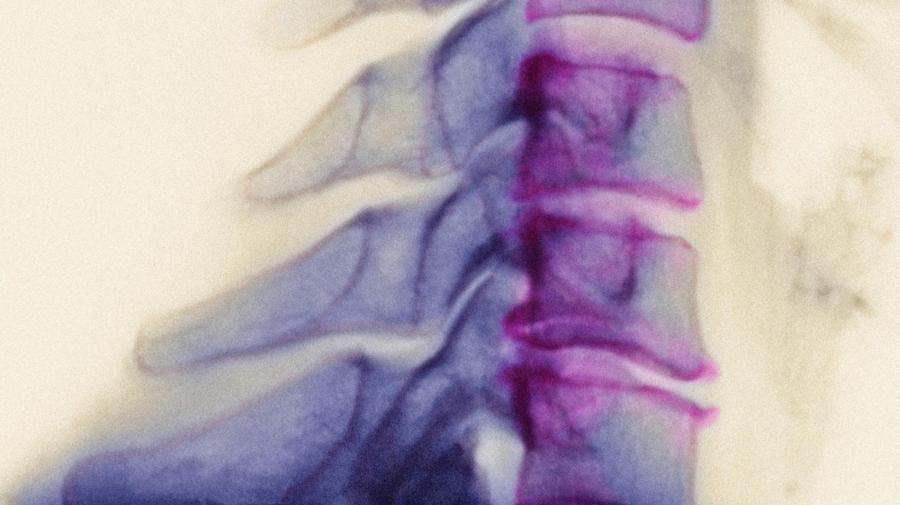What Is Osteophytic Lipping?

According to the Mayo Clinic, an osteophyte is the medical term for a bone spur, a bony projection that forms along the edge of a bone. Osteophytic lipping refers to a particular lip-like configuration of a bone spur along the articular (adjoining a joint) edge of a bone that is seen on X-rays, according to the Free Medical Dictionary.
The Mayo Clinic explains that bone spurs commonly occur where bones meet each other in the joints, such as the knee, hip, elbow and wrist. Bone spurs also are common in the bones of the spine. Frequently caused by wear and tear due to osteoarthritis, most bone spurs cause no symptoms. They are created by the body as a way of making up for the loss of cartilage, the natural cushion between the bones. However, depending on their location, they sometimes limit movement in the joint or cause pain. For example, a bone spur in the knee may make it difficult to bend or extend one’s leg, while a bone spur in the hip sometimes causes decreased range of motion or pain radiating into the knee. Additionally, bone spurs in the spine may irritate the spinal cord or spinal nerves, causing numbness or weakness in the arms or legs. Further, bone spurs in the shoulder sometimes irritate the muscles and tendons known as the rotator cuff, causing inflammation or tearing.
According to the Laser Spine Institute, bone spurs generally are not harmful, even when they occur near the spine. However, if spurs in the bones of the spine cause symptoms such as severe pain, weakness in the arms or legs, numbness or restricted movement, treatments are available. These include rest, anti-inflammatory medications, muscle relaxants, cortisone injections and physical therapy. Bone-spur surgery is possible, as well.





